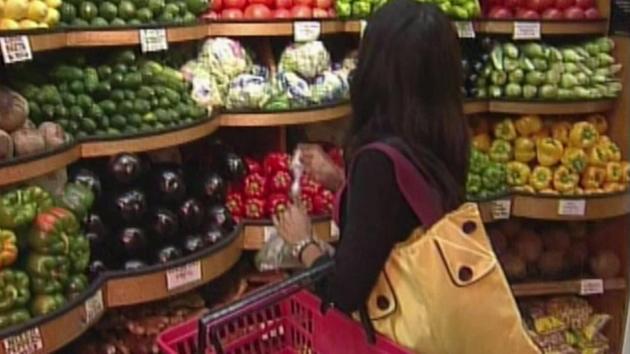NEW FDA PRODUCE SAFETY RULES AIM TO PREVENT ILLNESS OUTBREAKS

The Obama administration wants you to eat your fruits and vegetables. They also want the produce to be safe.
Long-awaited rules announced by the Food and Drug Administration Friday are designed to help prevent large-scale, deadly outbreaks of foodborne illness like those linked to fresh spinach, cantaloupes, cucumbers and other foods over the last decade. That means making sure workers are trained to wash their hands, irrigation water is monitored for harmful bacteria and animals do not leave droppings in fields.
The rules will phase in over the next several years and give the FDA sweeping new oversight over how food is grown on farms.
The majority of farmers and food manufacturers already follow good safety practices, but the rules are intended to give greater focus on prevention in a system that has been largely reactive after large outbreaks. The Centers for Disease Control and Prevention estimate that 48 million people – or 1 in 6 people in the United States – are sickened each year from foodborne diseases, and an estimated 3,000 people die.
The Obama administration has said they don’t want people to eat fewer fruits and vegetables because of safety concerns.
“The rules will help better protect consumers from foodborne illness and strengthen their confidence that modern preventive practices are in place, no matter where in the world the food is produced,” said Michael Taylor, the FDA deputy commissioner for foods.
The FDA also released rules Friday that will require importers to be more accountable for the safety of food they bring into the U.S. market. The government estimates that about 52 percent of fresh fruit and 22 percent of fresh vegetables are imported.
Taylor said both rules could help prevent illnesses such as an ongoing outbreak of salmonella linked to cucumber imported from Mexico. In that outbreak, four people have died and more than 700 people have fallen ill.
There have been many other outbreaks linked to produce in recent years. In 2006, E. coli in fresh spinach was linked to several deaths, including a 2-year-old. The CDC later issued a report saying the cause may have been contaminated irrigation water. A 2011 outbreak of listeria linked to cantaloupes killed 33 people. After outbreaks of cyclospora illnesses linked to imported cilantro, American investigators found toilet paper and human feces in Mexican fields where cilantro is grown.
The agency has haggled over how to write the rules since Congress approved them in 2010, trying to find a balance between food safety and regulating farms with safety measures already in place.
The FDA originally proposed the produce rules in 2013, but rewrote them last year after some farmers said they would be too burdensome. The final rules, released under a court-ordered deadline after advocacy groups sued over the delays, largely follow that rewrite.
The regulations are tailored to cover foods and growing methods that pose the greatest risk. They target produce such as berries, melons, leafy greens and other items usually eaten raw and more prone to contamination. A farm that produces green beans that will be cooked and canned, for example, would not be regulated. There are also exemptions for smaller farms.
The rules require farmers to test irrigation water quality, regularly train workers on the best health and hygiene practices and monitor wildlife that may intrude on growing fields, among other measures. There are also standards for keeping equipment and facilities clean.
Compared with the original 2013 proposal, the final rule requires less stringent standards for irrigation water quality and reduces the frequency of testing, in some cases. The organic industry had expressed concerns about the rules, especially because many organic farmers use raw manure as fertilizer and try to treat irrigation water with fewer chemicals.
Food industry groups and food safety advocates praised the rules. Sandra Eskin, director of food safety at the Pew Charitable Trusts, called the new rules a major public health victory. She said the focus now shifts to Congress, which will have to pay for the FDA’s efforts.
“With the rules now being finalized, its crunch time for FDA to be ready to help food processors and growers meet the requirements and then to ensure they can enforce them,” Eskin said.
FDA has asked for an extra $109 million to implement the entire food safety law, which also includes separate rules aimed at food manufacturing facilities released in September. Acting Commissioner Stephen Ostroff said in congressional testimony this fall that getting those dollars over the next budget year is crucial to ensure the rules work as intended.
The 2010 food safety law also authorized more inspections by the FDA and gave the agency additional powers to shut down facilities.







